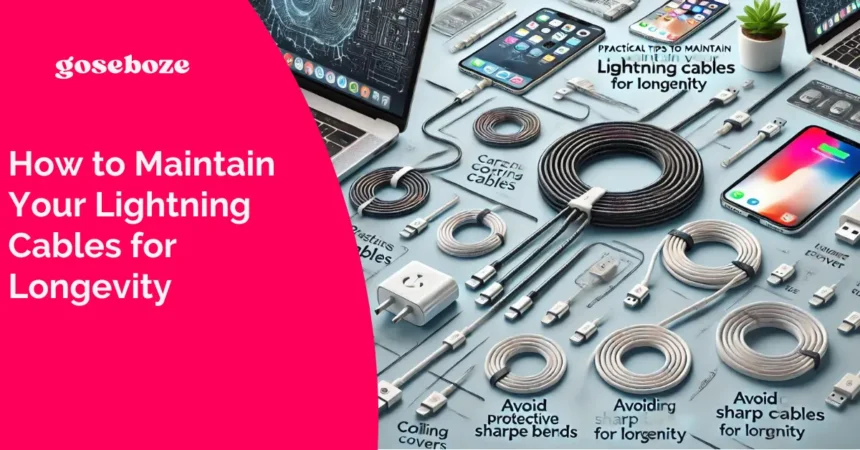Lightning cables are essential for keeping our devices charged and ready in our tech-savvy world. However, these cables can wear and tear, leading to frequent replacements. Proper maintenance can significantly extend the life of your Lightning cables, saving you both money and frustration. Here are some practical tips to help you maintain your Lightning Cables for longevity.
1. Handle with Care
The way you handle your Lightning cable can have a significant impact on its lifespan. Here are some tips:
Avoid Pulling from the Cord
When disconnecting your device, always pull the plug, not the cable. Pulling the cord can strain the connection point, leading to fraying or internal damage.
Unplug Gently
Avoid yanking the cable out of your device. Instead, gently unplug it by holding the connector. This reduces the risk of damaging the connector or the port.
Coil Properly
When storing your Lightning cable, coil it loosely. Avoid tight loops, as these can cause kinks and stress points. Use the over-under method to prevent tangling and maintain the cable’s shape.
2. Keep It Clean
Dirt and debris can accumulate on your Lightning cable and connectors, affecting performance and longevity.
Clean Connectors Regularly
Periodically clean the connectors using a dry, soft cloth. If needed, use a small amount of rubbing alcohol to remove stubborn grime. Ensure the connector is completely dry before using it.
Avoid Moisture
Keep your Lightning cable away from moisture. If it gets wet, dry it thoroughly before using it to prevent corrosion and electrical issues.
3. Protect Against Physical Damage
Physical damage is a common cause of cable failure. Here are some ways to protect your Lightning cable:
Use Cable Protectors
Consider using cable protectors or sleeves. These inexpensive accessories can reinforce the ends of your cable, where most damage occurs.
Avoid Sharp Bends
Avoid bending your cable at sharp angles, especially near the connectors. This can weaken the internal wires and lead to breakage.
Read Also: How Planetshakers Melbourne is Adapting to Digital Worship
Store Properly
When not in use, store your cable in a safe place. Avoid leaving it where it can be easily stepped on, crushed, or bent.
4. Choose High-Quality Cables
Investing in a high-quality Lightning cable can significantly improve its longevity. While it might be tempting to buy the cheapest option, these cables often lack durability.
Look for Certified Cables
Choose cables that are MFi (Made for iPhone/iPad) certified. These cables meet Apple’s standards for quality and compatibility.
Consider Reinforced Cables
Some cables have reinforced connectors and braided exteriors, which can withstand more wear and tear than standard cables.
5. Regularly Inspect Your Cables
Routine inspections can help you spot potential issues before they become serious problems.
Check for Damage
Look for signs of fraying, kinks, or exposed wires. If you notice any damage, stop using the cable immediately to prevent further damage to your device.
Test Functionality
Periodically test your cable to ensure it’s working correctly. If you notice any issues with charging or data transfer, it may be time to replace the cable.
Conclusion
Maintaining your Lightning cables doesn’t require much effort but can save you from the hassle and expense of frequent replacements. By handling your cables with care, keeping them clean, protecting them from physical damage, choosing high-quality options, and regularly inspecting them, you can ensure they last longer and perform better. A little attention to these details can go a long way in preserving the longevity of your Lightning cables.

Liam Voyager, an enthusiastic explorer and seasoned storyteller, is devoted to bringing his adventures to life for readers worldwide. Fuelled by a deep passion for uncovering new cultures and hidden treasures, he sets out on journeys that captivate and inspire curiosity. With his engaging narratives and stunning photography, Liam warmly invites readers to embark on unforgettable escapades across the globe.







